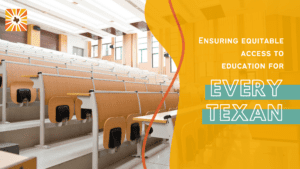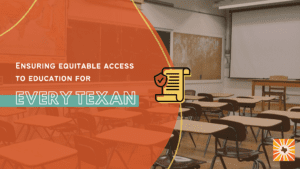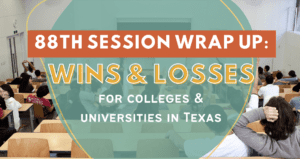
High Hopes, but Low FAFSA Completion Rates
Twitter Facebook Linkedin At the start of the year, educators and families across the U.S. were excited about the release of a better FAFSA. Texans from all corners of this
Two-thirds of Texans ages 25-54 lack an associate’s degree or higher.
Low-income working adults in Texas face significant barriers to moving into higher-skilled jobs that pay a family-supporting wage.

Of the nearly 1.2 million low-income working families—those with annual incomes lower than twice the federal poverty line, or $48,500 for a family of four—58 percent are headed by parents with no postsecondary education. Overall, two-thirds of Texans ages 25-54 lack an associate’s degree or higher, leaving Texas at a competitive disadvantage compared to other large states with higher educational attainment. While graduation rates are low for all students, they are especially low for part-time undergraduate students at community colleges. Only 23 percent complete college within six years compared to 32 percent for their peers attending full-time.
Additionally, Texas has a strong tradition of embracing immigrant culture, and immigrants have played a leading role in our state’s economic success. When our state legislature passed the Texas Dream Act in 2001, we were the first state to ensure tuition equity for immigrant students, recognizing the value of helping all Texas students pursue a college education, a career, and a pathway to becoming productive, engaged citizens. Unfortunately, there has been a hostile reversal of support of immigrants in Texas and nationally, with recent state policies federal-level policies that threaten Texas’s immigrant families and our state’s economic prosperity.

Senior Policy Analyst

Community Engagement Coordinator

Twitter Facebook Linkedin At the start of the year, educators and families across the U.S. were excited about the release of a better FAFSA. Texans from all corners of this

All students – regardless of race, class, or gender – deserve affordable post-secondary education. Access to financial aid makes it possible for many students to attain post-secondary education and pursue

The 88th Legislative Session ended in historic wins and losses for public four-year colleges and universities that will have a lasting impact on college access and affordability for years to